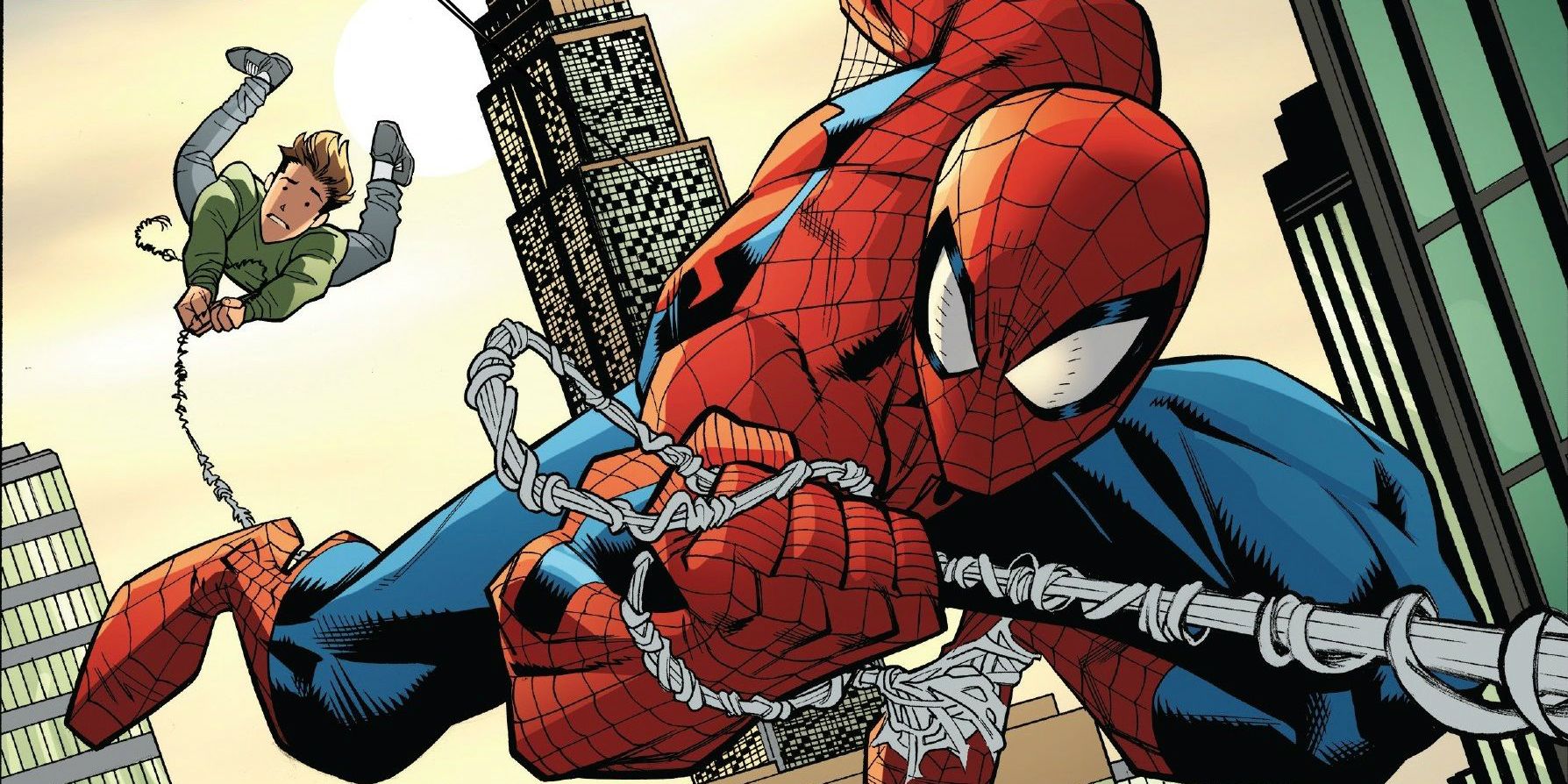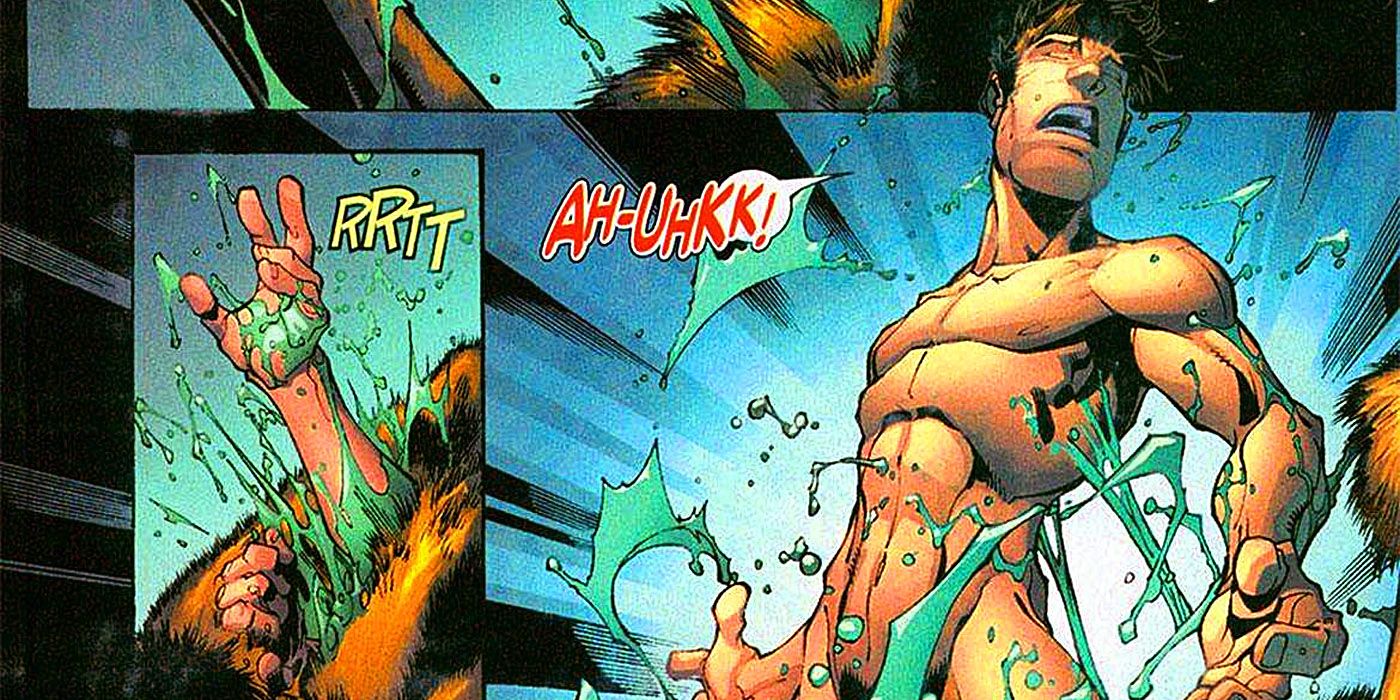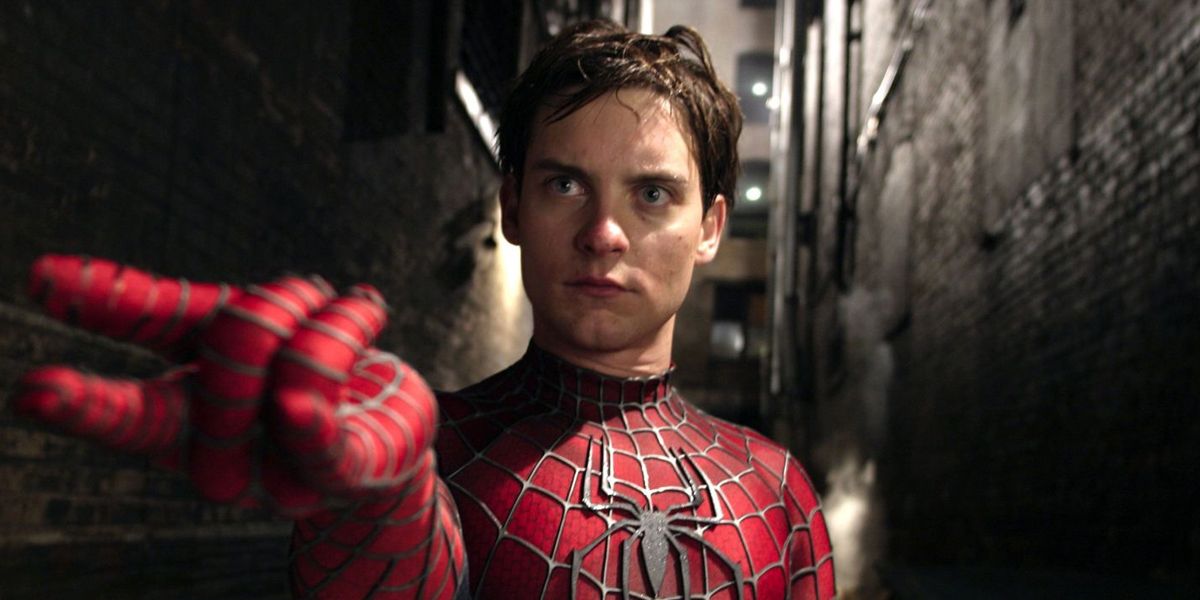
The Amazing Spider-Man has the proportionate strength, speed, and abilities of a spider, but what about his webbing? Traditionally, Spider-Man has relied on his own homemade gadgets, known as "web-shooters," to recreate a spider's ability to spin webs. But that wasn't always the case.
In the traditional version of the story, Peter Parker created a web fluid that could be contained in cartridges which, when placed in the shooters, allow him to fire out a compound that emulates a spider's webbing. Because the webbing was made scientifically, Spidey could adjust the formula, or combine it with different chemicals, to create special types of web-fluid to tackle a specific problem that regular webbing could not. Though the web-shooters are often reliable, there would be instances where he would run out of working cartridges, or his web-shooters would be broken or missing, leaving him unable to spin his webbing. Using his web-shooters to produce webbing was a longstanding tradition of Spider-Man's up until the early 2000's, where the ol' webhead would undergo some massive changes.
During writer J. Michael Straczynski's run on The Amazing Spider-Man, Peter Parker would have his entire character redefined in a more supernatural context, rather than a scientific one. Peter encountered a man named Ezekiel who claimed that Spider-Man receiving his powers via Spider bite was not a result of the radioactive nature of the spider. Instead, the spider had transferred its power before the radiation had killed it, thus linking Peter to an animal totem, in this case a Spider totem. He would eventually come face to face with an enemy named "The Queen," who sought to turn Spider-Man into her mate, and turned him into a giant spider in an attempt to control him. However, the "Man-Spider" hybrid died, and Peter was reborn with the ability to spin webs organically, as opposed to using his web-shooters, as well as the power to communicate with insects. Though this was the start of Spider-Man's descent into the supernatural, he would soon come face to face with his greatest otherworldly threat yet.

In 2005's Spider-Man crossover, The Other, Spider-Man, having had frequent black-outs and a reoccurring dizzy feeling, learns from a doctor that he is slowly dying. At the same time, Morlun returns and renews his hunt to defeat and feast on Spider-Man. After a brutal confrontation between the two, Morlun successfully kills Spider-Man, but chooses to wait until later to feast on him. When Peter's body reaches the hospital, Morlun attempts to feast on his corpse, but is stopped by Mary Jane Watson, then wife of Peter Parker. When Morlun pushes her aside and breaks her wrist, Peter briefly comes back to life and and murders Morlun in retaliation with his newfound spider "stingers." Though Peter died a second time afterwards, a new entity crawls out of Peter's body while in the morgue, and forms a cocoon to protect the new life form. The cocoon, as it turns out, contains Peter Parker's new body, which is waiting to be reborn.
While confined in the cocoon, Peter's consciousness confronts a spider-like creature, and is given the choice of either embracing his inner Spider and being reborn, or staying dead while denying his true nature. Peter ultimately chooses to be reborn, and though initially seems back to normal, he was granted even more Spider-powers. On top of his organic webbing, which allowed him to use vibrations in the strands to sense people, his entire body could now stick to surfaces, and he could even use night vision. This upgrade to Spidey's powers, though it made him more spider-like then before, would be short-lived as, after 2007's controversial story-line One More Day, his power-set would seemingly return to normal.
While Spider-Man would return to using his traditional web-shooters during this time period, it was never fully explained why the organic webbing disappeared. A partial explanation was given during the Spider-Island story-line, when all of New York City was given spider-powers, including organic webbing. Peter's then girlfriend Carlie Cooper becomes one of the citizens with spider-powers, and after she seems to run out of her organic webbing, asks Peter how she could replenish it. Peter suggests that eating starchier foods and drinking more fluids seems to replenish the supply after prolonged periods. This line implies that Peter, whether deliberately or not, did not keep up with his starch intake and, as a result, let his organic shooters dry up.Spider-Man would later include upgrades to improve his web-shooter's functionality, such as voice commands, returning the web-spinners ability to one more scientific in nature, rather than supernatural. This begs the question as to why Marvel made the decision to change Spidey's powers in the first place?

Around the time that Spider-Man was going through supernatural changes, Sam Raimi's Spider-Man was released in theaters, and was a box office success. The movie incarnation of Spider-Man, rather than inventing web-shooters, had the ability to organically spin webs from the start. Raimi opted to change Spidfer-Man's webbing, given the fact that Spider-Man acquired his other spider powers through the bite (it wouldn't be too far of a leap for his webbing to originate from the bite as well). Perhaps, in an attempt to appeal to first-time comic readers who only watched the movies, Marvel opted to give Spider-Man organic webbing like his movie counterpart. But that still doesn't explain the sudden return to status quo, as the Spider-Man franchise at that time still featured the character with organic webbing.
Though web-shooters would eventually appear on the big screen in 2012's The Amazing Spider-Man, and subsequently appear in the MCU incarnation of Spider-Man movies, the comic book incarnation had been using web-shooters for a few years prior to these developments. Marvel could have decided, with all of the supernatural events in Spider-Man's life, that a return to the status quo was necessary to attract new and returning readers, and returning to the tried and true web-shooters was a part of that return to form. Though Spider-Man still, to this day, uses his classic web-shooters, for one moment in time he produced organic webbing.
from ScreenRant - Feed https://ift.tt/35d8laY
via IFTTT







0 comments:
Post a Comment